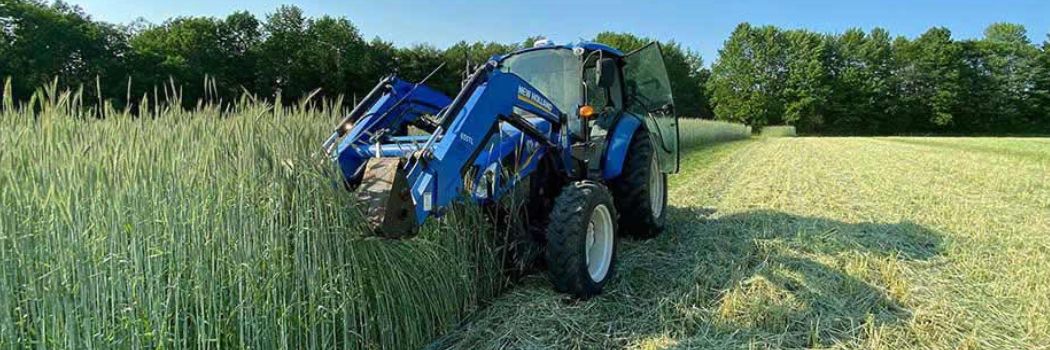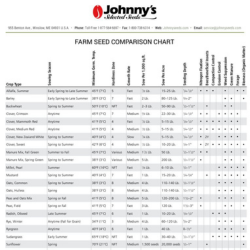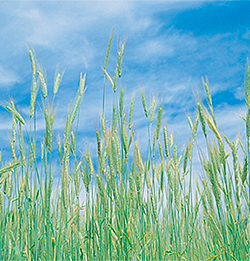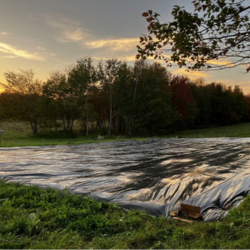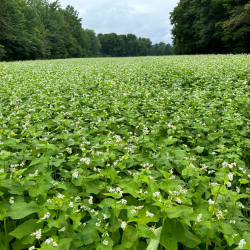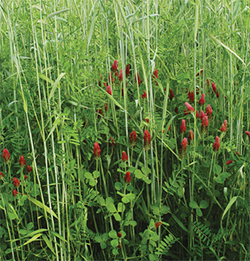Winter Cover Cropping: A Fine Time to Build Soil
By Collin Thompson, Johnny's Farm Operations Manager
When winter sets in, the tractor is parked in the shed and the hoes are hung on the wall, but there are some tools that can continue working throughout the winter. Establishing cover crops in the summer and fall will help protect and improve your soil, even if the rest of the farm or garden is hibernating in the cold.
Benefits of Winter Cover Crops
Winter cover crops can provide several benefits that can be captured in the fall and winter, and again in the spring:
- Increase soil organic matter and boost soil fertility
- Stabilize soil and reduce erosion
- Suppress cool-season weeds
- Improve tilth and seedbed quality in spring
- Improve drainage in compacted or heavy soils
Winter Hardy Cover Crops
- Establishes ground cover quickly.
- Hardiest winter cover crop to stem wind & water erosion.
- Deep & extensive root structure prevents compaction, improves soil tilth.
Winter hardy cover crops are those that have sufficient cold tolerance to survive winter conditions. These crops may continue to actively grow during winter months if adequate light and warmth is available, otherwise they will go dormant until conditions become favorable for growth in the early spring. The established roots and longer periods of active growth hold the soil in place and encourage soil biological activity.
Several winter hardy crops can be sown late into the fall, allowing for establishment after summer vegetable crops. Common examples include winter rye, winter wheat, hairy vetch, and several types of clover. In slightly more mild climates, Austrian winter peas, annual ryegrass, and more tender clovers will overwinter successfully.
The vigorous spring growth of these crops needs to be managed carefully. One option is mowing and then tilling to incorporate the crop residue into the soil. Another option for growers looking to use these crops as a mulch for summer plantings is to terminate the crop by crimping and/or tarping in late spring; this will provide a thick mat of crop residue that can suppress weeds and retain moisture. To avoid nitrogen tie-up as crop residues decompose, it may be wise to delay planting by two to three weeks after terminating the cover crop. Learn more about cover crop termination methods in our article, Cover Crop Termination for Organic Growers.
Winter Kill Cover Crops
- Suppresses weeds.
- Acts as a green manure.
- Supports bees and beneficial insects.
The advantage of winter killed cover crops comes from the abundant biomass produced during the summer and fall. This crop debris provides a protective blanket over the soil, preventing erosion while still being relatively easy to manage in the spring. Some winter killed options, such as oats, field peas, oilseed radish, and mustard can grow late into the fall, enduring several hard frosts. Others, such as buckwheat, Sudan grass, and pearl millet have less frost tolerance and will die off earlier as temperatures drop below freezing.
Mowing standing crop debris in the spring is sometimes helpful, though often light tillage is all that is required to incorporate the winter killed crop prior to planting. This means fields are available earlier than they would be when seeded to a winter hardy cover crop.
However, because the value of winter killed cover crops comes from the biomass they produce, they need to be sown early enough in the summer/early fall to put on sufficient growth. As a result, they typically can only be used following spring crops or when they are undersown in a standing crop, such as corn or brassicas.
Winter Cover Crop Seed Mixes
Many growers will intentionally mix winter hardy and winter killed cover crops to capture the benefits of both types. Johnny’s Fall Green Manure Mix was developed with this in mind for northern growers – the peas, clover, and ryegrass will winter kill, while the rye and hairy vetch will continue to grow in the spring.
Consider blending multiple seed types together for your growing zone, adjusting the ratio to match the time of year and field conditions.
Learn More
- Johnny's Farm Seed & Cover Crops • Comparison Chart (PDF)
- Garden Cover Crops & Green Manures • with Collin Thompson, Johnny's Farm Ops Manager • Webinar Resources
- Cover Cropping for Field & Garden • with Collin Thompson, Johnny's Farm Ops Manager • Webinar Resources
- Cover Crop Decision-Making Tool • 5 Steps for Deciding What to Plant When & Where • Article
- Cover Crop Termination • Article
- Choosing a Spring Cover Crop • Article
- Benefits of Grass–Legume Combinations • Article
- Buckwheat : A Quick, Easy Summer Insectary & Weed-Control Cover Crop • Article
- The Importance of Soil • Article
- Intro to Farmscaping: Insectary, Trap, & Repellent Crops for Pest Management • Article
- The Pollinator Issue • Article
- Winter Cover Crop Chart • by Pam Dawling for Growing for Market, September 2009
- Chapter 13 • Winter Cover Crops • Risk Management Guide for Organic Producers • University of Minnesota
- Cover Planting for Home Gardens & Raised Beds • Article


